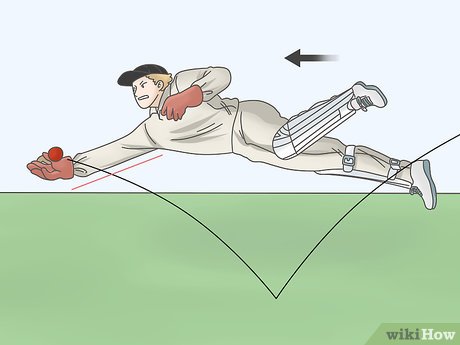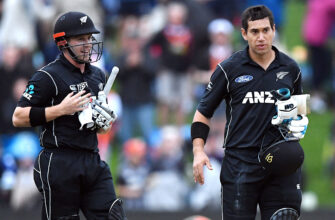In the high-stakes theatre of Test cricket, where fortunes can shift with a single delivery, moments of individual brilliance often intertwine with technological precision to forge a team`s destiny. Such was the case on Day 1 of the 1st Test between India and West Indies in Ahmedabad, where a subtle sound, a firm conviction, and a decisive leap of faith combined to ignite a pivotal moment for Team India. This was not merely about claiming a single wicket; it was about validating an instinct, showcasing the evolving role of a modern wicketkeeper, and setting a formidable tone for a dominant performance.
The Unseen Noise That Changed Everything
The match was still in its nascent stages, the pitch barely scuffed by the early exchanges. Jasprit Bumrah, India’s premier pace exponent, delivered a good-length ball to West Indies opener John Campbell during the 7th over. Campbell went for the drive, a routine shot, yet in the milliseconds following impact, a ripple of appeals spread through the Indian cordon. The on-field umpire, however, remained unmoved, perhaps concluding that the sound was merely the bat brushing the pads – a common auditory illusion in the cacophony of a cricket field.
Yet, behind the stumps, the young and astute wicketkeeper, Dhruv Jurel, possessed an almost preternatural certainty. His ears, finely tuned by years of dedicated practice, had registered something more precise, something unmistakably different. He was convinced he had heard a faint, almost imperceptible kiss between leather and willow – the unmistakable signature of an edge.
A Captain`s Dilemma, A Wicketkeeper`s Conviction
Captain Shubman Gill, still relatively new to the intricate dance of Test leadership, faced the classic DRS (Decision Review System) conundrum. The umpire had said “not out,” and the team`s precious review was a resource not to be squandered. A wrong call could prove disastrous later in the innings, leaving India without a crucial lifeline. Doubt, a natural companion to such high-pressure decisions, undoubtedly lingered.
But Jurel`s voice, brimming with an unwavering belief, cut through the uncertainty. “Zor se awaaz aaya hai,” he reportedly insisted, a Hindi phrase translating directly to “There was a loud noise.” It was not a wild guess born of desperation; it was the confident declaration of a keeper who lives and breathes the nuances of the game from the closest vantage point. Gill, perhaps weighing the conviction in Jurel’s voice against the inherent risk, made a call that reflected immense trust in his young teammate. The captain`s finger went up, signalling for a review – a decision that would prove to be a masterstroke.
Technology Validates Intuition: The DRS Revelation
The stadium held its breath, a collective pause as the TV umpire meticulously reviewed the footage, scrutinizing every angle. The initial replays offered little clarity, much like the on-field decision, adding to the tension. Then came the `UltraEdge` technology – the impartial arbiter of faint contacts and the ultimate validator of Jurel`s sharp senses. The spikes on the graph told an unambiguous story: two distinct disturbances.
One spike, as anticipated, confirmed the bat brushing the pad. The second spike, however, crucially corroborated Jurel’s initial assessment: the ball had indeed kissed the outside edge of Campbell`s bat. “Out!” flashed on the big screen, sealing Campbell`s fate and igniting jubilant celebrations in the Indian camp. Gill, his initial hesitation replaced by sheer relief and delight, embraced Jurel – a powerful gesture that spoke volumes about trust earned and a gamble handsomely paid off.
The Domino Effect: India`s Bowling Masterclass
Campbell’s dismissal, engineered by Jurel’s eagle-eared conviction, proved to be far more than just one wicket. It was the catalyst that truly opened the floodgates. India`s bowling attack, now brimming with renewed confidence and a palpable shift in momentum, proceeded to dismantle the West Indies batting lineup with ruthless efficiency. Mohammed Siraj, showcasing exceptional rhythm and control, was the chief destroyer, bagging an impressive 4 wickets for just 38 runs. Jasprit Bumrah, finding his lethal swing and precision, ably chipped in with 3 wickets for 41 runs.
The visitors capitulated for a mere 162 runs in 44.1 overs, a stark testament to India`s collective bowling prowess, but undeniably sparked by that crucial early breakthrough. Even Justin Greaves` resilient 32 could only delay the inevitable, as the West Indies innings folded rapidly after Jurel`s astute call.
Beyond the Catch: The Modern Wicketkeeper`s Strategic Prowess
This incident vividly underscores the evolving and increasingly sophisticated role of the wicketkeeper in modern cricket. No longer merely a specialist gloveman whose primary task is to prevent byes and take catches, they are now often the tactical hub of the team, possessing the best vantage point to assess line, length, and the most minute deflections. Jurel`s intervention was a masterclass in on-field analytics, where acute human instinct, honed through countless hours of rigorous practice, perfectly complemented the cold, hard data of technology.
It was a poignant reminder that while DRS offers a critical safety net against human error, its optimal and most impactful use still heavily relies on the sharp judgment and unwavering conviction of those closest to the action. In a sport increasingly driven by complex data and analytics, sometimes the most profound insights, and indeed, the game-changing moments, still originate from a simple, confident whisper behind the stumps.
Conclusion: A Small Sound, a Grand Statement
Dhruv Jurel`s DRS masterstroke in the Ahmedabad Test was far more than a fleeting moment of individual brilliance; it was a strategic triumph for Team India. It highlighted the invaluable synergy between youthful intuition, composed captaincy, and cutting-edge technology. As India continues its journey in the current series, this pivotal decision will undoubtedly be remembered as the moment a young wicketkeeper`s resolute belief in a faint sound laid the foundational blueprint for a dominant Test performance, proving unequivocally that in cricket, sometimes the quietest convictions make the loudest and most impactful statements.







